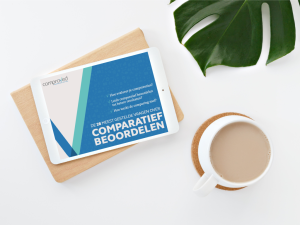
Getting started with Comproved

Making the switch to comparative judgement might feel overwhelming. It doesn’t have to! Here you will find everything you need to get started with Comproved. In four steps, we tell you what you need to know about 1) working out your idea, 2) access and ICT, 3) getting the exam board on board, and 4) working with the tool.
Rather get this information during a workshop?
Step 1: Work out your idea
2
You don’t have to do it alone. You can ask us to run a workshop so you’re up to speed right away. Check out the options here.
4
There is already a lot of experience with Comproved. Read about others’ experiences and get inspired.
7
Looking for someone to discuss your ideas with? We would be happy to help you with concrete advice and examples. Do not hesitate to contact us.
Step 2: Access and ICT
Access to Comproved is generally arranged through your educational institution’s IT department. Depending on the organization, it may vary exactly where you need to go. In all cases, your supervisor is a good starting point to talk about options for working with Comproved. Ask your supervisor about the technology, ICT or education policy staff member (the title varies by educational institution). This employee can help you further.
We can always join a conversation with IT to support you and answer practical questions. Please contact us for this.
Step 3: Get the examination board on board
Comparative judgement is not a well-known practice everywhere. The examination board may ask questions about, for example, reliability and validity. Especially for summative use of the tool, in some educational institutions it is necessary to get permission from the examination board. The following pages and texts may help.
If the examination board does not yet know what comparative assessment entails, the background page helps to get a first impression.
For further exploration, read the E-book.


Are there questions about reliability and validity? The following scientific articles are helpful for further substantiation:
- Reliability: Verhavert, S., De Maeyer, S., Donche, V., & Coertjens, L. (2017). Scale separation reliability: what does it mean in the context of comparative judgement? Applied Psychological Measurement, 9, 1-18. Link
- Validity: van Daal, T., Lesterhuis, M., Coertjens, L., Donche, V., & De Maeyer, S. (2019). Validity of comparative judgement to assess academic writing: Examining implications of its holistic character and building on a shared consensus. Assessment in Education: Principles, Policy & Practice, 26(1), 59-74. Link
All scientific publications can be found on the background page.
Step 4: Work with the tool
Is everything set up? Then it comes down to the very practical work.
Are you going to use Comproved for the first time? Do a test run with your colleagues! Not just to get everyone on board, but also to get some practice yourself. See also the manual of the tool.
Exciting, how will students respond? We explain how you can prepare for a peer assessment. We have also collected the main misconceptions among students.
Are you looking for more support?

On this website you can also find specific info for Comproved users, such as:
Once you access the tool, even more information is available. In the Tool you will find info icons next to each option that you may or may not check when you set up your assessment.
When you press the chat-icoontje, you will find a list of frequently asked questions.
Still need some help? Use our expertise.
You can contact us for:
- Many practical examples (e.g. How to work with live assessment?)
- All your questions about assessment (e.g. Why is comparative judgement reliable?)
- Specific questions about Comproved (e.g. How does it work with retakes?)
- Support in your design (e.g. Does this also work for an internship assessment and how?)


